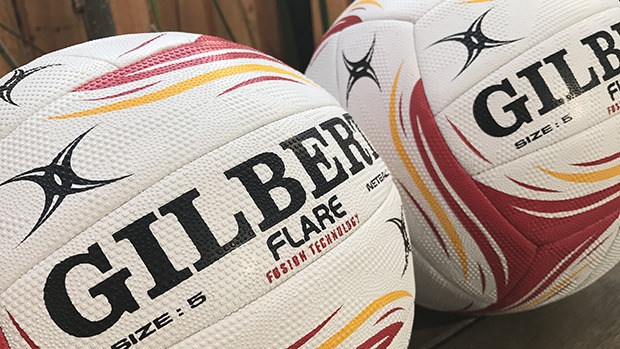
A year ago, we were given some of the first prototypes of the Gilbert Flare Fusion Netball. After using them for 12 months, here’s how they stood up.
As a netball coach, I’m an absolute demon about my netballs.
And unashamedly so.
Any netball coach worth their salt guards their balls with their life, as we all know how easily and often they can go walkabout, and how quickly they’re ruined if they’re not looked after.
Despite our best efforts to preserve them, most balls we use don’t tend to last anywhere near as long as we’d like – at least not to a standard that players of intermediate level and above would want for their training and games (we’ve all got those players who’ll rifle through the entire bag to avoid the balls that have seen better days), and that goes for any ball brand.
By six months, some balls have lost too much grip, but most often it’ll be the stitching that’s given up the ghost, with one or two panels that are misshapen because the stitching has split or unravelled.
NEED NETBALL DRILLS? CHECK OUT OUR FULL LIBRARY HERE
So I was skeptical 12 months ago when a friend at Gilbert sent me a few prototypes of the company’s then yet-to-be-released Flare Fusion netball to test out.
The Flare Fusion represented a new concept in netball design – the panels are stitched beneath, but then also “fused” with glue near the surface to create what is intended to be not only a more durable ball, but one with less noticeable surface deviations in between each panel.

Sit a Flare Fusion alongside other netballs and you’ll see the difference immediately. Or, to be more accurate, you won’t see it – the stitching, that is. It’s tucked away underneath somewhere.
We happened to be heading to the Gold Coast almost immediately after receiving the prototypes, and after a week in the Queensland we found that once players’ palms became sweaty, the balls weren’t grippy enough.
After providing that feedback, changes were made to the grip pattern, and a fresh batch was sent out.
The Flare Fusions do feel different to other Gilbert balls.
It’s hard to explain without getting your hands on one, but to me they feel slightly denser than other balls – almost as if there’s extra layering between the leather and the air bladder within. Some players described them as feeling slightly heavier than other training balls.
The grip itself is closer to an elite match ball than a training ball, with a smoother surface and less of the rough ‘dimples’ that are the hallmarks of most training balls.
Almost a year later, I’m happy to report that this second lot of sample balls is still at the top of the ball bag.

They’ve been thrashed, too. They’ve been through a full state league preseason and season, including weekly training sessions, indoor and outdoor warm-ups in both wet and dry, as well as indoor and outdoor filming sessions for our drills videos.
And they’re still in good condition. Normally we’d be begging the club for a fresh consignment by now, but they’ve held up well and look like they’d be good for another preseason, at least.
While of course the grip isn’t as sticky as it was when we first got our hands on them, it’s pretty darn good, and not a single one of the balls has even a millimetre of split panels anywhere.
At just under $70 AUD, the Flare Fusions aren’t cheap. They sit in the middle of the Gilbert range – a bit more than half the price of the company’s top-of-the-line Synergie game ball ($120), but double the price of the all-purpose Gilbert Spectra T500 balls we’ve traditionally used for training.
But for intermediate to higher level representative teams that find their balls starting to split halfway through a season, the Flare Fusions could be worth the investment.
I’d use them again in a heartbeat.





